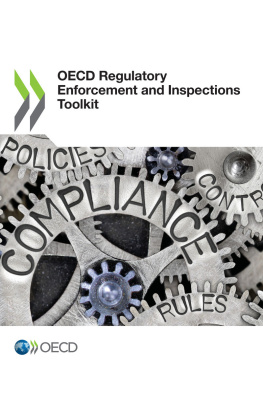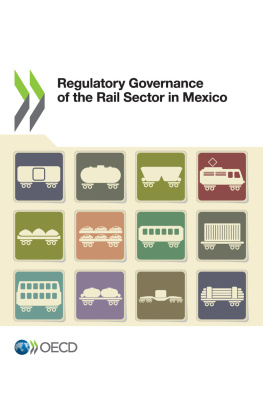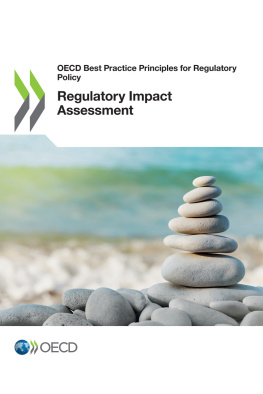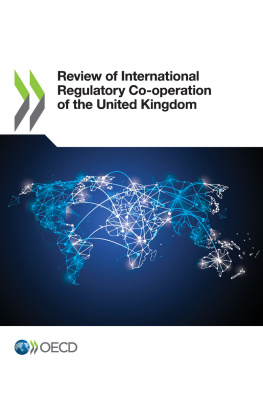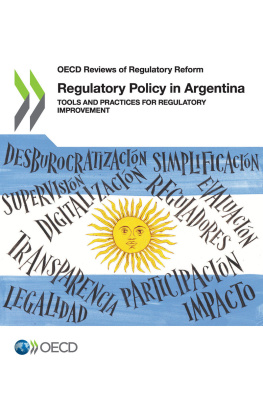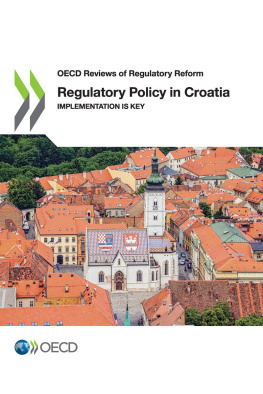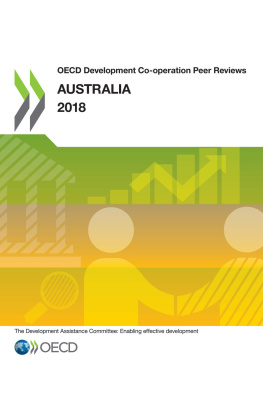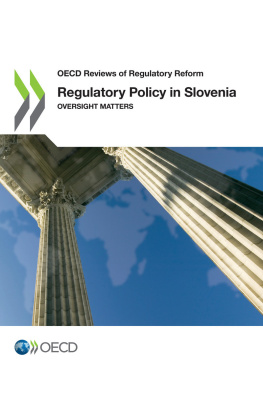coll. - OECD regulatory enforcement and inspections toolkit
Here you can read online coll. - OECD regulatory enforcement and inspections toolkit full text of the book (entire story) in english for free. Download pdf and epub, get meaning, cover and reviews about this ebook. year: 2018, genre: Politics. Description of the work, (preface) as well as reviews are available. Best literature library LitArk.com created for fans of good reading and offers a wide selection of genres:
Romance novel
Science fiction
Adventure
Detective
Science
History
Home and family
Prose
Art
Politics
Computer
Non-fiction
Religion
Business
Children
Humor
Choose a favorite category and find really read worthwhile books. Enjoy immersion in the world of imagination, feel the emotions of the characters or learn something new for yourself, make an fascinating discovery.
OECD regulatory enforcement and inspections toolkit: summary, description and annotation
We offer to read an annotation, description, summary or preface (depends on what the author of the book "OECD regulatory enforcement and inspections toolkit" wrote himself). If you haven't found the necessary information about the book — write in the comments, we will try to find it.
OECD regulatory enforcement and inspections toolkit — read online for free the complete book (whole text) full work
Below is the text of the book, divided by pages. System saving the place of the last page read, allows you to conveniently read the book "OECD regulatory enforcement and inspections toolkit" online for free, without having to search again every time where you left off. Put a bookmark, and you can go to the page where you finished reading at any time.
Font size:
Interval:
Bookmark:
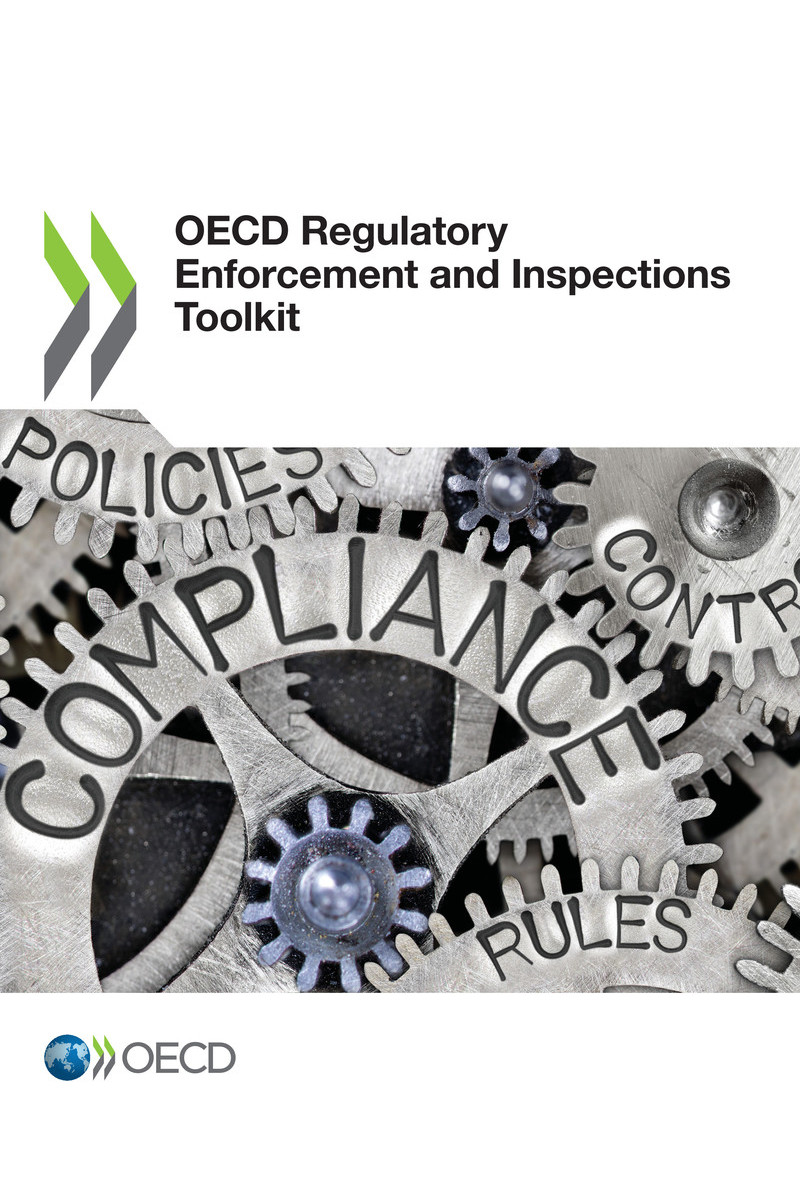
OECD (2018), OECD Regulatory Enforcement and Inspections Toolkit , OECD Publishing, Paris.
https://doi.org/10.1787/9789264303959-en
Regulations are indispensable for the proper function of economies and the society. They create the rules of the game for citizens, business, government and civil society. They underpin markets, protect the rights and safety of citizens and ensure the delivery of public goods and services. The objective of regulatory policy is to ensure that regulations and regulatory frameworks work effectively in the public interest.
The way in which regulations are designed is a major factor in both the quality of the regulatory environment for businesses and citizens and the outcomes achieved. But how regulations are implemented and enforced, and how compliance with regulatory requirements is assured and promoted, are also critical determinants of whether the regulatory system is working as intended.
Inspections are one of the most important ways to enforce regulations and to ensure regulatory compliance. As already shown by the OECD Best Practice Principles for Regulatory Enforcement and Inspections (OECD, 2014[1]), there are many core activities that inspections have in common and that are relevant for all or most sectors where inspections take place. These issues include planning and better targeting inspections, communicating with regulated subjects, preventing corruption, and promoting ethical behaviour, as well as the organisation of inspections and the governance of inspection authorities.
The OECD Regulatory Enforcement and Inspections Toolkit presents a checklist of 12 criteria to help officials, regulators, stakeholders and experts assess the level of development of the inspection and enforcement system in a given jurisdiction, or of a particular institution or structure, to identify strengths and weaknesses, and potential areas for improvement.
The Toolkit builds on previous work by the OECD to promote regulatory reform and the implementation of sound regulatory practices across the whole of government. The body of information and experience it has gathered is summarised in the Recommendation of the Council on Regulatory and Policy Governance (OECD, 2012[2]).
These principles have been prepared by Daniel Trnka, OECD Senior Policy Analyst, in co-operation with Florentin Blanc, consultant and specialist on business inspection reforms, under the supervision of Nick Malyshev, Head of the Regulatory Policy Division, and Marcos Bonturi, Director of the OECD Public Governance Directorate. Jennifer Stein co-ordinated the editorial process. Thanks are extended to all members of the Regulatory Policy Committee and the Network of Economic Regulators who provided substantial comments and support to the various drafts of the Toolkit.
Extensive and useful comments were also received through public consultations, including from the Ministry of Finance and Public Function, Spain; the Dutch Ministry of Economic Affairs and Climate; the Government of Japan; the French Energy Regulatory Authority; the Brazilian National Metrology, Quality and Technology Institute; Paul van Dijk, Mindert Mulder and Rob Velders, the Netherlands; and Aute Kasdorp, Supervision Strategy, the Netherlands.
The OECD Regulatory Enforcement and Inspections Toolkit is based on the 2014 OECD Best Practice Principles for Regulatory Enforcement and Inspections (OECD, 2014[1]). It offers government officials, regulators, stakeholders and experts including the OECD Secretariat itself a simple tool for assessing the level of development of the inspection and enforcement system in a given jurisdiction, institution or structure, to identify strengths and weaknesses as well as areas for improvement.
The document presents a checklist of 12 criteria that correspond to the 11 OECD Best Practice Principles for Regulatory Enforcement and Inspections (OECD, 2014[1]) plus a twelfth criterion for a reality check of actual performance. These criteria are divided into sub-criteria to make them easier to use.
The 12 criteria are:
Evidence-based enforcement: Regulatory enforcement and inspections should be evidence-based and measurement-based: deciding what to inspect and how should be grounded in data and evidence, and results should be evaluated regularly.
Selectivity: Promoting compliance and enforcing rules should be left to market forces, private sector actions and civil society activities wherever possible: inspections and enforcement cannot take place everywhere and address everything, and there are many other ways to achieve regulations objectives.
Risk focus and proportionality : Enforcement needs to be risk-based and proportionate: the frequency of inspections and the resources employed should be proportional to the level of risk, and enforcement actions should aim at reducing the actual risk posed by infractions.
Responsive regulation : Enforcement should be based on responsive regulation principles; that is, inspection enforcement actions should be modulated depending on the profile and behaviour of specific businesses.
Long-term vision : Governments should adopt policies on regulatory enforcement and inspections, and establish institutional mechanisms with clear objectives and a long-term strategy.
Co-ordination and consolidation : Inspection functions should be co-ordinated and, where needed, consolidated: less duplication and fewer overlaps will ensure a better use of public resources, minimise the burden on regulated subjects, and maximise effectiveness.
Transparent governance : Governance structures and human resources policies for regulatory enforcement should support transparency, professionalism, and results-oriented management. The execution of regulatory enforcement should be independent from political influence, and compliance promotion efforts should be rewarded.
Font size:
Interval:
Bookmark:
Similar books «OECD regulatory enforcement and inspections toolkit»
Look at similar books to OECD regulatory enforcement and inspections toolkit. We have selected literature similar in name and meaning in the hope of providing readers with more options to find new, interesting, not yet read works.
Discussion, reviews of the book OECD regulatory enforcement and inspections toolkit and just readers' own opinions. Leave your comments, write what you think about the work, its meaning or the main characters. Specify what exactly you liked and what you didn't like, and why you think so.

